Comedy Duos Who Truly Liked Each Other (This is Not One of Them)
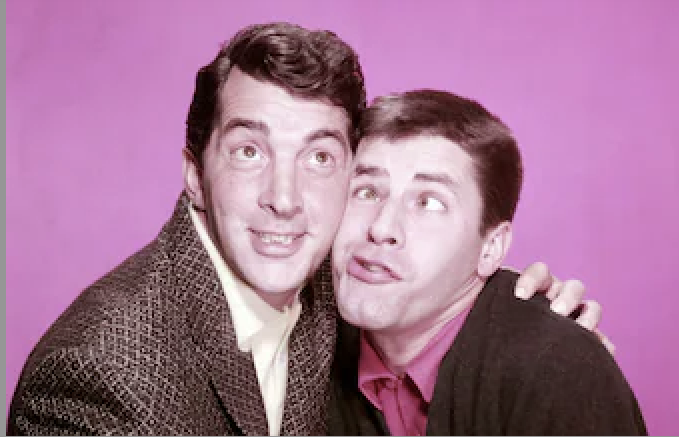
Some comedy teams were just thrown together for laughs, but others clicked because they truly liked each other. Whether as lifelong friends, real-life partners, or respectful collaborators, these duos brought more than jokes to the stage. Their off-screen bonds made the chemistry on-screen unforgettable, proving that the best punchlines often come from genuine connection.
1. Abbott & Costello – Timing That Surpassed Everything
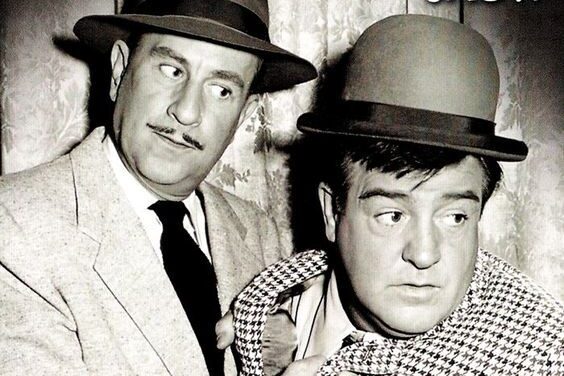
1. Abbott & Costello – Timing That Surpassed Everything
This duo perfected their comedic craft over 10 years, crafting routines like “Who’s on First?” that seemed effortlessly funny because they truly were. Bud Abbott’s sharp, straight-laced delivery complemented Lou Costello’s endearing, high-energy confusion beautifully. During World War II, Abbott and Costello were global superstars, commanding top dollar and massive audiences. Between 1940 and 1956, they produced 36 films, earning a significant share of the profits each time.
They consistently ranked among the Top 10 box office stars from 1941 to 1951, reaching the No. 1 spot in 1942. They also starred in their own radio show, broadcast on NBC from 1942 to 1947 and later on ABC from 1947 to 1949. In a remarkable show of patriotism, they sold $85 million worth of War Bonds during a 35-day tour in the summer of 1942. Despite offstage tensions, their mutual respect and admiration kept their onstage partnership strong and convincing.
2. George Burns & Gracie Allen – Warmth of a Real-Life Marriage
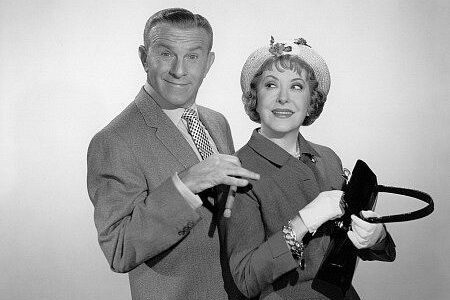
Gracie’s endearing absurdity paired with George’s gentle, straight-faced reactions created skits that radiated warmth and authenticity, making their love and chemistry palpable. As George Burns famously quipped, “For forty years my act consisted of one joke. And then she died,” highlighting how integral Gracie’s humor was to their partnership. On screen, their banter was a delight: Gracie Allen: “You know, when two people are as close as we are, we only need one brain between us.” George Burns: “It’s lucky we have that.” Their real-life marriage shone through in their performances, with George responding to Gracie’s absurd takes with a warm smile, rather than ridicule. This genuine affection made them feel like friendly neighbors, rather than TV stars, inviting audiences into their living room with warmth and charm.
3. Lucille Ball & Vivian Vance – Behind-the-Scenes Support

Lucille Ball and Vivian Vance’s on-screen dynamic as frenemies was matched by a strong and enduring friendship off-screen. Vivian Vance affectionately described Lucille Ball as more than just her comedic partner – she was a steadfast supporter, especially during times when networks questioned her talent. Their genuine friendship added depth to their on-screen interactions, making moments like Betty rubbing Lucy’s feet feel like a natural expression of their affection. This loyalty also kept the show grounded, helping them navigate personal challenges and professional pressures, including the stresses of fame. Through it all, they maintained a supportive and caring relationship, balancing humor with heartfelt concern.
4. Rowan & Martin – Smooth, Businesslike Collabs

Rowan and Martin’s show had the feel of a relaxed conversation between two close friends who were also skilled comedians. Their tone was refined, with a smooth comedic style that featured well-timed cues, seamless transitions, and quick pacing. Rather than relying on improvisation, their performances were the result of careful collaboration. They had a strong sense of comedic timing, with Rowan setting up the jokes and Martin delivering the punchlines with his signature charm. Their mutual respect and trust were evident in their performances, allowing them to work together seamlessly and keep the humor both light and clever. Despite the effortless feel, their comedy was the result of a deep professionalism and genuine camaraderie
5. The Smothers Brothers – Sibling Rivalry with Heart

The Smothers Brothers’ comedy was rooted in their real-life brotherly relationship, with Tom’s mischievous antics often getting on his brother’s nerves. Their signature line, “Mom always liked you best!” was a humorous reflection of genuine sibling rivalry. Behind the scenes, tensions sometimes arose, and the brothers even sought counseling together, acknowledging the intense dynamics of their relationship. Despite their differences, their blend of playful friction and affection kept their act feeling fresh and authentic. Their popular 1960s show was known for tackling tough topics, including satirical takes on the Vietnam War, and their brotherly bond allowed them to approach these issues with confidence and unity..
6. Cheech & Chong – Counterculture Comrades

Cheech Marin and Tommy Chong rose to fame with their comedic partnership, fueled by their infectious chemistry and creative energy. After meeting in Vancouver in 1969, they developed a unique act that resonated with audiences and pushed the boundaries of humor. However, behind the scenes, their relationship was complex: Chong’s direction of their films sometimes led to tension, particularly when Cheech felt overshadowed. This dynamic was explored in their 2025 documentary, Cheech & Chong’s Last Movie. Despite their disagreements, the duo’s bond endured, with their bickering becoming an integral part of their comedic identity and a testament to their lasting connection.
7. Bob & Ray – Quiet, Dry, and Enduring
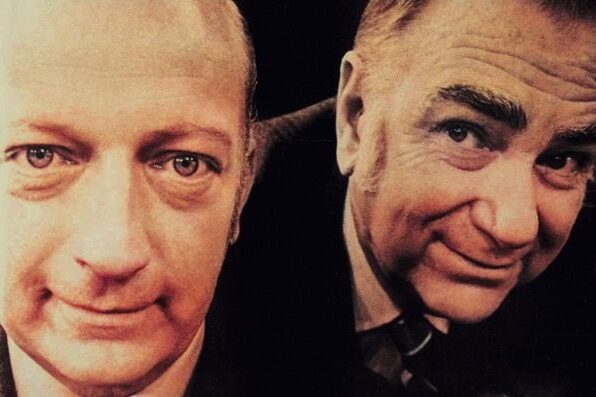
Bob Elliott and Ray Goulding’s partnership began on Boston radio at WHDH in 1946, where their remarkable mutual respect and ability to listen to each other led to a successful half-hour daily show that eventually became the long-running “Matinee with Bob & Ray”. Their comedic style was built on surreal and offbeat material, featuring improvised soap opera parodies, fictional characters like Mary McGoon, and mock ads for made-up sponsors – all delivered with a straight-faced tone and seamless timing. Over the next five decades, they remained creative partners, working in radio, TV, records, Broadway, and even Mad Magazine. Their act was sustained by their fluid interplay and deep trust in each other’s instincts. The duo’s easy rapport made their performances feel like a casual conversation between friends, which endeared them to their audience.
8. Penn & Teller – Opposites Attract Through Respect
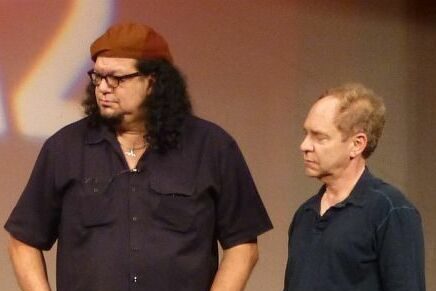
Penn Jillette and Teller have been a dynamic magic and comedy duo since 1975, with their contrasting styles blending perfectly. Penn’s outspoken and bold personality pairs well with Teller’s silent and enigmatic presence. Their partnership has endured for over 50 years, thanks to a foundation of mutual respect rather than forced camaraderie. As Penn noted, their relationship has been built on a calculated professionalism, which has proven to be a lasting foundation. This measured approach, combined with deep loyalty, has fueled their creative work and kept their partnership strong, making them a rare success story in the entertainment industry.
Comedy Duos Who Didn’t Get Along (But Were Still Hysterical on Stage and Screen)
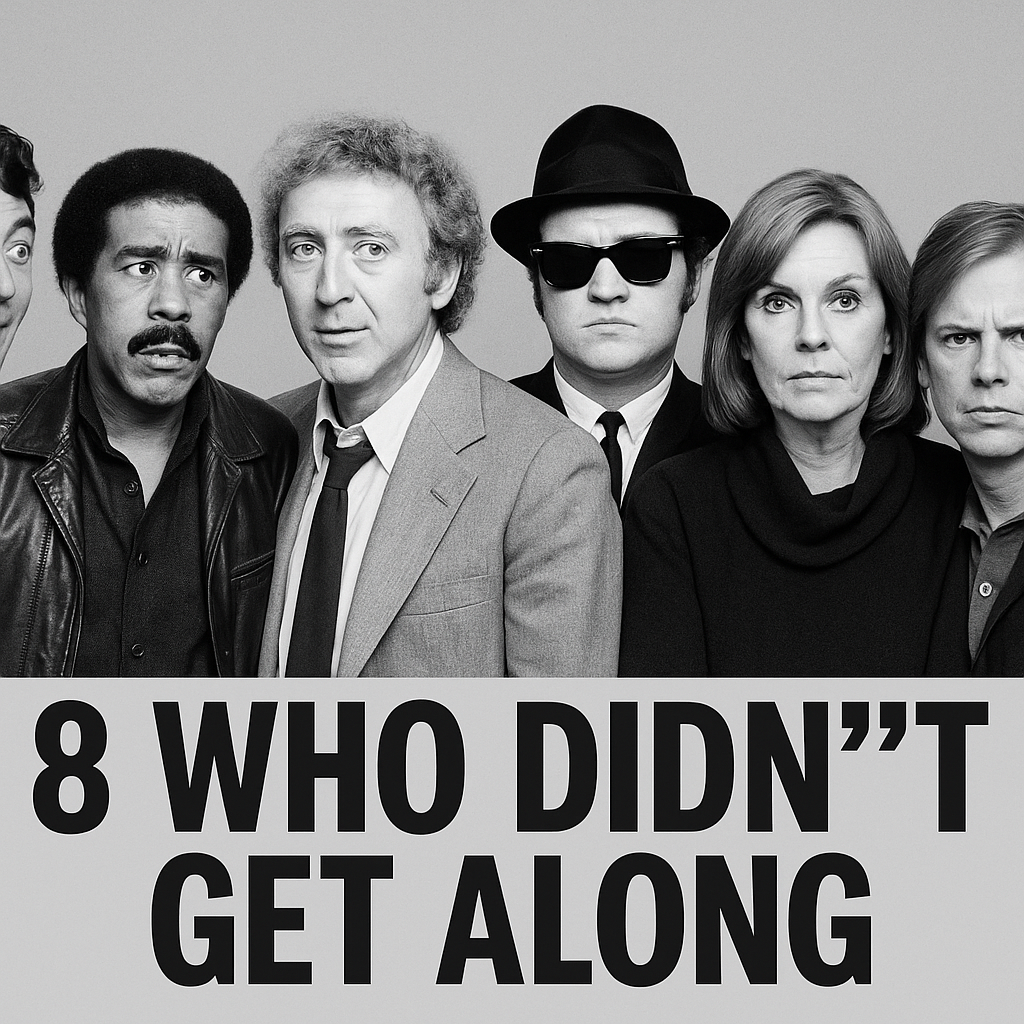
Some of the funniest acts in comedy history were fueled by something deeper than punchlines—tension. Whether it was clashing egos, creative differences, or personal struggles, these comedy duos didn’t always get along behind the scenes. But you’d never know it from the laughs they delivered. Somehow, the friction added fuel to their fire, producing unforgettable chemistry that still makes people laugh today. Here’s a look at eight legendary pairs who proved that even the rockiest partnerships can create pure comedy gold.
1. Dean Martin & Jerry Lewis – Charm vs. Control
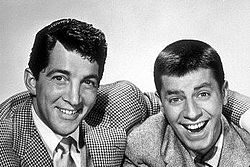
By the mid-1950s, Dean Martin and Jerry Lewis were a dynamic duo, with Martin’s smooth singing style complemented by Lewis’s energetic comedic antics. However, beneath the surface, tensions were rising. Martin felt overshadowed by Lewis’s growing creative influence, and their partnership began to fray. During the filming of Hollywood or Bust in June 1956, Martin’s frustrations boiled over, and he expressed his discontent. The duo’s partnership ultimately ended in July 1956, amid hurt feelings and financial disagreements, at the peak of their popularity. For the next 20 years, they had limited contact, and Lewis later expressed regret over the split. A surprise reunion on Jerry’s MDA Telethon in September 1976, arranged by Frank Sinatra, briefly rekindled their connection, though old tensions never fully dissipated.
2. Richard Pryor & Gene Wilder – Genius vs. Addiction
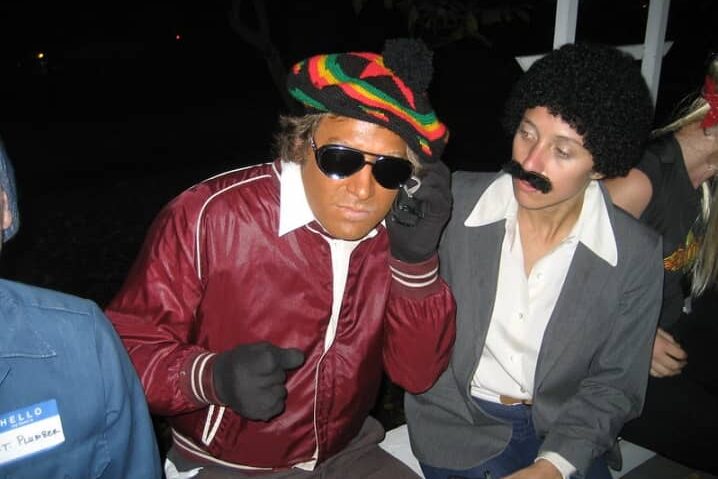
Richard Pryor and Gene Wilder’s on-screen partnership was undeniably electric, starring in hit comedies like Stir Crazy (1980) and Silver Streak. Their chemistry thrived on Pryor’s improvisational genius and Wilder’s quick-witted responses. However, behind the scenes, Pryor’s struggles with addiction led to challenges, including tardiness, demanding behavior, and disruptions to projects. Despite these difficulties, the two actors maintained a deep professional respect and admiration for each other’s talent. Although their collaboration slowed down after the film Another You (1991) underperformed, they continued to hold each other in high esteem, even if they weren’t close personal friends.
3. Dan Aykroyd & John Belushi – Public Partners, Private Friction
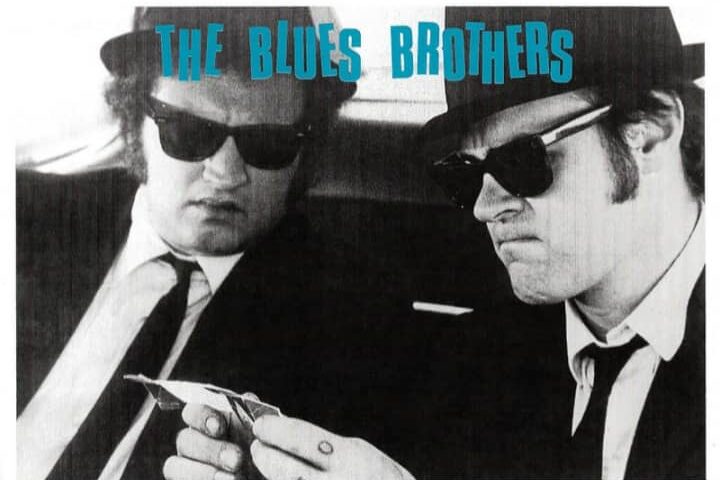
Dan Aykroyd and John Belushi formed an unstoppable duo on Saturday Night Live and in The Blues Brothers, bringing a dynamic energy to their performances. However, behind the scenes, Belushi’s intense partying and unpredictable moods affected their relationship. Aykroyd later acknowledged that it was challenging to work with Belushi’s lifestyle, often leaving him to take on more responsibilities. The two had different approaches, with Belushi pushing limits and Aykroyd being more grounded, which sometimes led to friction. Despite their creative partnership, frustration was a recurring theme. Although Belushi’s untimely death cut their collaboration short, Aykroyd has reflected on the imbalance in their dynamic, with Belushi’s unpredictability often contrasting with his own more practical approach.
4. Jerry Stiller & Anne Meara – Married and Occasionally at Odds
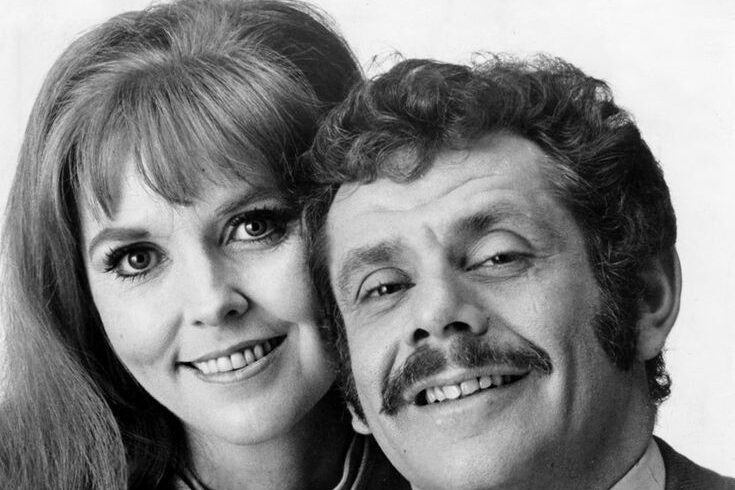
For decades, Jerry Stiller and Anne Meara delighted audiences with their sharp comedic timing and on-stage chemistry. However, behind the scenes, creative differences often led to tension. Anne has acknowledged that disagreements over material and direction were common, as both she and Jerry wanted control over their portrayals. Their differing comedic styles, with Anne leaning towards literary satire and Jerry favoring slapstick, created friction that they had to navigate. Over time, they found a balance, pursuing individual careers while still valuing their shared creative partnership. Their experience highlights the importance of negotiation and compromise in long-term creative collaborations, even within marriage.
5. Lenny & Squiggy (McKean & Lander) – When Spin‑Off Dreams Fizzle
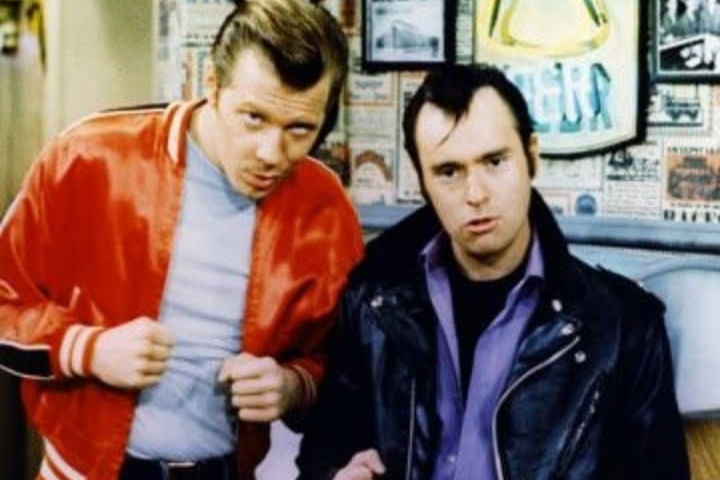
Michael McKean and David Lander’s comedic chemistry as Lenny and Squiggy, which originated at Carnegie Mellon, propelled them to success on Laverne & Shirley. Their iconic characters, with Lenny’s laid-back style and Squiggy’s distinctive “Helloooo!”, became a beloved part of the show. However, as the series progressed, their partnership faced challenges: Lander’s health struggles with multiple sclerosis and McKean’s expanding career, including his role in Spinal Tap, took them in different directions. A planned spin-off ultimately didn’t materialize, and Cindy Williams later noted that this might have been for the best. Despite this, both actors continued to bring laughter to audiences, albeit on separate paths, as their careers evolved beyond their comedic duo roles.
6. David Spade & Chris Farley – Best Buds Under Pressure
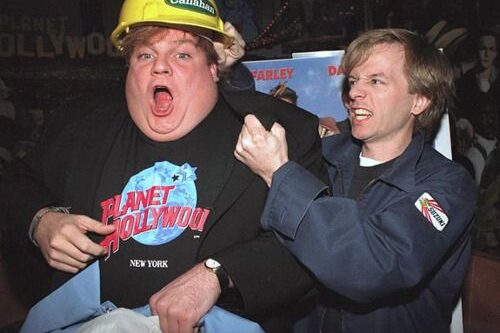
On screen, David Spade and Chris Farley’s comedic partnership sparked in films like Tommy Boy and Black Sheep, with Spade’s dry wit complementing Farley’s energetic antics. However, their off-screen friendship was more complex. Farley’s struggles with substance use put a strain on their relationship, which Spade later acknowledged was difficult to navigate. Spade’s absence from Farley’s funeral sparked speculation, but he later explained that it was simply too emotionally challenging for him to attend. Their story highlights the challenges that fame can bring to friendships, sometimes causing them to fray under the pressure of the spotlight.
7. Martin Lawrence & Tisha Campbell – Sitcom Chemistry With Hidden Legal Strife

The on-screen partnership between Steve Martin and Tisha Campbell showcased their comedic talents, with Martin’s high-energy humor complemented by Campbell’s warmth and wit. However, behind the scenes, serious issues arose. In 1997, Campbell sued Martin Lawrence for sexual harassment and violent behavior, allegations he denied, and the lawsuit was eventually settled privately in 1998. The tension and conflict affected the tone and performance in Martin’s final season. Despite the on-screen chemistry, real-life conflicts existed, highlighting that the magic of sitcoms can coexist with personal turmoil.
8. Beavis & Butt‑Head (Judge) – Dysfunction Written in DNA

The iconic animated duo Beavis & Butt-Head thrived on conflict and bickering. Created by Mike Judge, the pair’s dynamic was built on contrasting personalities: Butt-Head’s mocking nature clashed with Beavis’s brooding, fueling their comedic chemistry. Their tension-driven interactions, with one laughing and the other sneering, captured the essence of teenage dysfunction, transforming lowbrow humor into cultural commentary. Their relationship exemplifies how friction can be the core of a comedic act, driving the humor and satire that defines their appeal.
This story 16 Iconic Comedy Duos- Who Loved (and Hated) Each Other was first published on Daily FETCH


